A List of Risk Symptoms of High Cholesterol: Advice for Controlling LDL Levels
What are the symptoms of high cholesterol? Having high levels of LDL cholesterol is bad for your health. Period. But how do you know if you are suffering with a high cholesterol level? And is all cholesterol bad for you? Read on and find out!
High Levels of LDL Cholesterol – What Exactly Does This Mean and Is It Bad for You?
LDL cholesterol, or low-density lipoprotein, is also known as “bad” cholesterol. And for good reason.
LDL is the sticky cholesterol that builds up on the walls of your arteries, narrowing them – causing heart disease and even death.
That’s pretty bad, hey?
How to lower LDL cholesterol
Just by making a few lifestyle changes it is possible to significantly lower your LDL cholesterol level.
1. Limit your intake of alcohol.
Alcohol consumption raises levels of LDL.
2. Take some exercise.
Taking part in a regular exercise regime has many benefits.
– It will help you to lose weight and get fit.
– Improve your cardio-vascular system.
– Tone your body.
– Stimulate your body into producing enzymes which move LDL from the blood where it is causing harm, to your liver where it is converted to bile where it is either excreted or used in the digestion process.
3. Avoid saturated fats in your diet.
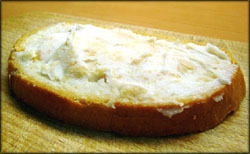 Saturated fats and trans-fats, such as butter, lard and the fat on your meat should be avoided or at least your intake reduced. Instead, replace these with monounsaturated or polyunsaturated fats which can help reduce LDL.
Saturated fats and trans-fats, such as butter, lard and the fat on your meat should be avoided or at least your intake reduced. Instead, replace these with monounsaturated or polyunsaturated fats which can help reduce LDL.
4. Give up smoking.
High Levels of HDL Cholesterol – What Exactly Does This Mean?
Firstly, don’t panic!
HDL cholesterol, or high-density lipoprotein, is also more commonly known as “good” cholesterol. This is the type of cholesterol that you should be encouraging.
HDL has been shown to inhibit inflammation and coagulation in the blood and as such it is believed that HDL can actually protect against atherosclerosis (the hardening of the artery walls).
So it does the complete opposite to LDL.
How to Increase Your Levels of HDL
Women tend to have higher levels of HDL. Sorry men.
But it is important for both sexes to concentrate on increasing their HDL levels.
Among other benefits, some studies have suggested that low levels of HDL cholesterol can be associated with poor memory and memory decline.
 So as we age it is even more important that we maintain a healthy diet high in HDL foods. To improve your HDL levels it is important to:
So as we age it is even more important that we maintain a healthy diet high in HDL foods. To improve your HDL levels it is important to:
1. Take regular exercise.
2. Eat a healthy diet, low in saturated fats and high in whole grains, fruit and vegetables.
3. Do not smoke. Smoking can lower HDL, especially in women.
4. Consume alcohol in moderation. Having 1-2 drinks per day, (one drink should be no more than: 12 ounces of beer or 4 ounces of wine), can cut the risk of dying from heart disease by between 30-50%. But, be aware, any more than the recommended daily amounts then you run the risk of actually increasing your LDL levels.
High Cholesterol Symptoms – Assessing Your Cholesterol Levels
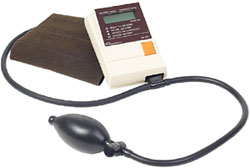 First and foremost you should take medical advice when trying to assess your levels of cholesterol.
First and foremost you should take medical advice when trying to assess your levels of cholesterol.
You can not “feel” high cholesterol. So you can’t know you have high cholesterol without taking a blood test.
It is important that you have a recognized test, undertaken by a health professional so that you know exactly what your levels of cholesterol are. In some instances, a health practitioner may deem it necessary for a patient to be prescribed high cholesterol medication like niacin for cholesterol in order to lower their LDL levels – because diet and exercise alone may not be sufficient.
The American Heart Association, the National Institutes of Health (USA), and the National Cholesterol Education Program (USA) all have the following guidelines for detecting those at risk of heart disease from high LDL levels.
The results are based on fasting HDL levels:
– Men under 40 and women under 50: <1.03 mmol/L (millimoles per liter)
– Men aged 40-59 and women aged 50-59: 1.03-1.55 mmol/L
– Over 60: >1.55 mmol/L.
So, if your fasting HDL level falls within any of the parameters listed above, you are suffering from high cholesterol.
Your health professional will advise you on what course of action to take.
Other Methods for Detecting Symptoms of High Cholesterol
The Risk Factors
As we’ve already learned, without actually taking a cholesterol test you can not know if you are suffering from high LDL cholesterol.
But there are several risk factors that could mean you are more likely to be suffering from high cholesterol, and knowing what these are will mean you have a better chance of controlling your high cholesterol levels and stay healthy.
Weight as One of the Risk Symptoms of High Cholesterol
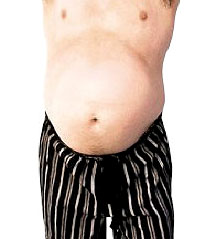 Even carrying just a few extra pounds can seriously increase your risk of suffering from high cholesterol levels.
Even carrying just a few extra pounds can seriously increase your risk of suffering from high cholesterol levels.
So, if you are overweight then try to follow a low cholesterol diet plan to help shed some pounds. Even losing 5-10 pounds will have an effect.
The moment you start to change your diet your LDL levels will start to improve. It’s a win-win situation.
Poor Diet as One of the Risk Symptoms of High Cholesterol
 A diet high in saturated fats can cause levels of LDL to rocket.
A diet high in saturated fats can cause levels of LDL to rocket.
Fatty meats, deep fried foods and sugary snacks can all contribute to increasing your high cholesterol levels. It is also one of the easiest risk factors to eliminate.
Changing your diet to one rich in whole grains, lean meat, fruit and vegetables is one of the best lifestyle changes you can make.
Lack of exercise as one of the risk symptoms of high cholesterol
Even moderate exercise can increase you levels of HDL.
Couch potatoes are at a much higher risk of having high cholesterol. And it’s not the intensity that matters, but the duration – so a long walk of moderate intensity is something you should be aiming for.
You should eventually be exercising hard enough to be just out of breath for between 30-60 minutes per day.
Smoking as One of the Risk Symptoms of High Cholesterol
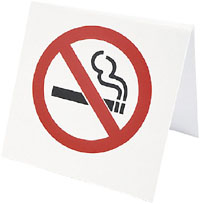 Cigarettes contain a man-made chemical called acrolein.
Cigarettes contain a man-made chemical called acrolein.
This chemical is easily absorbed into the bloodstream, where, scientists believe, it affects the way the body metabolizes cholesterol – and not in a good way.
Acrolein inhibits a vital enzyme which keeps LDL whole. Without this enzyme the LDL can oxidize and breakdown causing other substances to bind to the LDL resulting in inflammation and plaque build up in your arteries.
Alcohol Consumption as One of the Risk Symptoms of High Cholesterol
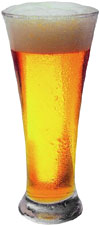 If you drink more than the daily recommended guidelines for alcohol consumption than you run the risk of increasing your levels of LDL.
If you drink more than the daily recommended guidelines for alcohol consumption than you run the risk of increasing your levels of LDL.
It is a fine line, 1-2 glasses of red wine have been shown to reduce the ‘stickiness’ of the blood, especially when drunk with a meal – but any more than this and you are doing more harm than good.
Try and reduce your alcohol intake. It won’t just benefit your cholesterol levels but also your liver, your blood pressure, your overall general health and your wallet!
Age and Gender as One of the Risk Symptoms of High Cholesterol
I’m afraid some things you just can’t change – and your risk factors for suffering from high cholesterol due to age and gender is one of them!
Once you are over about 20 years of age your cholesterol levels will start to rise naturally.
If you are male they tend to level off around the age of 50.
For women they stay relatively low because high levels of estrogen protect against heart disease that is until the menopause, when estrogen levels start to decline and cholesterol levels start to rise.
Your Family and Medical History as One of the Risk Symptoms of High Cholesterol
Sometimes, you do all you can with your diet and lifestyle, yet you may still suffer from high cholesterol.
Unfortunately this could all be down to your family history – your genes.
Familial hyperlipidemia and familial hypercholesterolemia are disorders that run in families which may result in high cholesterol levels.
Medication as One of the Risk Symptoms of High Cholesterol
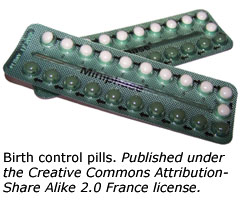 Birth control pills – these can increase the risk of blood coagulating (clotting). An estrogen based contraceptive will decrease LDL and increase HDL, whereas a progestin based contraceptive pill has the opposite effect.
Birth control pills – these can increase the risk of blood coagulating (clotting). An estrogen based contraceptive will decrease LDL and increase HDL, whereas a progestin based contraceptive pill has the opposite effect.
Anti-inflammatory drugs – some of these can raise LDL and HDL levels, so check with your physician if you are prescribed any anti-inflammatories.
Beta blockers – used to treat high blood pressure, some brands may also increase LDL.
If you have any concerns about any prescribed medications you should always consult with your medical practitioner.
What to Do about Symptoms of High Cholesterol
If you think you may have one or more of the above risk factors for a high cholesterol level, then you should seek a blood cholesterol test from your medical practitioner.
Ignoring a high cholesterol level can lead to heart disease. And take a good look at the list. If there are some risk factors you can do something about – like losing weight or giving up smoking – then do it!
Help yourself to keep healthy.
Anecdotal Symptoms of High Cholesterol – Worth Thinking about, but not Proven
There are a couple of other high cholesterol symptoms that although commonly discussed they do not have 100% scientific backing.
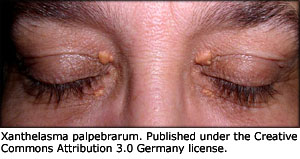 That does not mean they should be dismissed entirely, rather they should be looked at in conjunction with your cholesterol level blood test and any of the other risk factors we have already noted.
That does not mean they should be dismissed entirely, rather they should be looked at in conjunction with your cholesterol level blood test and any of the other risk factors we have already noted.
They are:
– Fatty deposits around the eyelids (xanthelasmas).
– Angina.
Final Thoughts about Symptoms of High Cholesterol
In conclusion, it is really important to stress that without a proper medical test for high blood cholesterol you will not know if you are suffering from high levels of LDL.
You can not “feel” high cholesterol, it is something that must be tested for.
But, there are risk symptoms of high cholesterol that can alert you, and keep you on track to have a healthy, low cholesterol lifestyle.
What Would You Like to Read Now After?
Identifying High Cholesterol Symptoms: Recognizing the Problem of Having High LDL Cholesterol
High Cholesterol in Children and the Importance of a Cholesterol Reducing Diet
Go to the top of this article about Symptoms of High Cholesterol
Go to the homepage Cholesterol Lowering Foods
